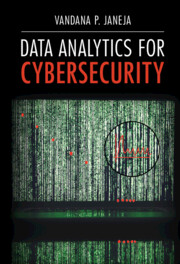Refine search
Actions for selected content:
48294 results in Computer Science
Degree sequences of sufficiently dense random uniform hypergraphs
- Part of
-
- Journal:
- Combinatorics, Probability and Computing / Volume 32 / Issue 2 / March 2023
- Published online by Cambridge University Press:
- 15 August 2022, pp. 183-224
-
- Article
- Export citation
Introduction to the 38th International Conference on Logic Programming Special Issue
-
- Journal:
- Theory and Practice of Logic Programming / Volume 22 / Issue 4 / July 2022
- Published online by Cambridge University Press:
- 15 August 2022, pp. 499-504
-
- Article
-
- You have access
- HTML
- Export citation
Measuring statistical learning by eye-tracking
-
- Journal:
- Experimental Results / Volume 3 / 2022
- Published online by Cambridge University Press:
- 15 August 2022, e10
-
- Article
-
- You have access
- Open access
- HTML
- Export citation
Introduction to the 38th International Conference on Logic Programming Special Issue II
-
- Journal:
- Theory and Practice of Logic Programming / Volume 22 / Issue 5 / September 2022
- Published online by Cambridge University Press:
- 15 August 2022, p. 640
-
- Article
-
- You have access
- HTML
- Export citation
CRAIG INTERPOLATION THEOREM FAILS IN BI-INTUITIONISTIC PREDICATE LOGIC
- Part of
-
- Journal:
- The Review of Symbolic Logic / Volume 17 / Issue 2 / June 2024
- Published online by Cambridge University Press:
- 12 August 2022, pp. 611-633
- Print publication:
- June 2024
-
- Article
-
- You have access
- Open access
- HTML
- Export citation
Optimal singular dividend control with capital injection and affine penalty payment at ruin
-
- Journal:
- Probability in the Engineering and Informational Sciences / Volume 37 / Issue 2 / April 2023
- Published online by Cambridge University Press:
- 12 August 2022, pp. 462-490
-
- Article
- Export citation
Almost first-order stochastic dominance by distorted expectations
- Part of
-
- Journal:
- Probability in the Engineering and Informational Sciences / Volume 37 / Issue 4 / October 2023
- Published online by Cambridge University Press:
- 12 August 2022, pp. 888-906
-
- Article
- Export citation
The mnemonic consequences associated with sharing personal photographs on social media
- Part of
-
- Journal:
- Memory, Mind & Media / Volume 1 / 2022
- Published online by Cambridge University Press:
- 11 August 2022, e12
-
- Article
-
- You have access
- Open access
- HTML
- Export citation

Data Analytics for Cybersecurity
-
- Published online:
- 10 August 2022
- Print publication:
- 21 July 2022
NLE volume 28 issue 5 Cover and Back matter
-
- Journal:
- Natural Language Engineering / Volume 28 / Issue 5 / September 2022
- Published online by Cambridge University Press:
- 09 August 2022, pp. b1-b3
-
- Article
-
- You have access
- Export citation
A mapping method for anomaly detection in a localized population of structures
- Part of
-
- Journal:
- Data-Centric Engineering / Volume 3 / 2022
- Published online by Cambridge University Press:
- 09 August 2022, e25
-
- Article
-
- You have access
- Open access
- HTML
- Export citation
Emerging trends: Deep nets thrive on scale
-
- Journal:
- Natural Language Engineering / Volume 28 / Issue 5 / September 2022
- Published online by Cambridge University Press:
- 09 August 2022, pp. 673-682
-
- Article
-
- You have access
- Open access
- HTML
- Export citation
NLE volume 28 issue 5 Cover and Front matter
-
- Journal:
- Natural Language Engineering / Volume 28 / Issue 5 / September 2022
- Published online by Cambridge University Press:
- 09 August 2022, pp. f1-f2
-
- Article
-
- You have access
- Export citation
A well-known representation of monoids and its application to the function ‘vector reverse’
- Part of
-
- Journal:
- Journal of Functional Programming / Volume 32 / 2022
- Published online by Cambridge University Press:
- 08 August 2022, e10
-
- Article
-
- You have access
- Open access
- HTML
- Export citation







